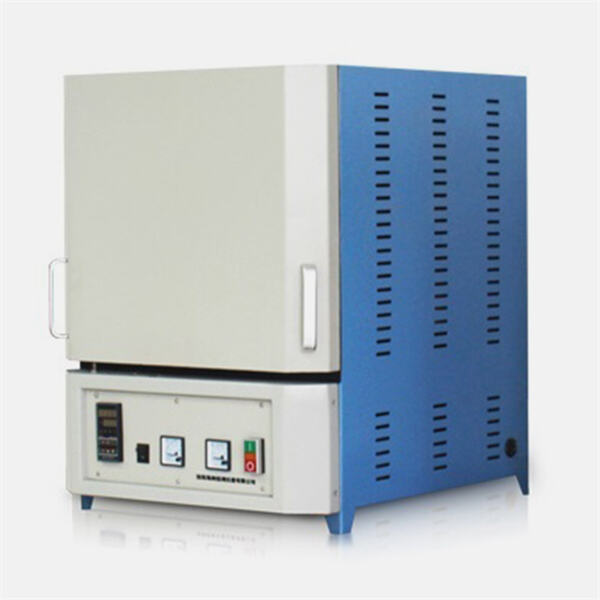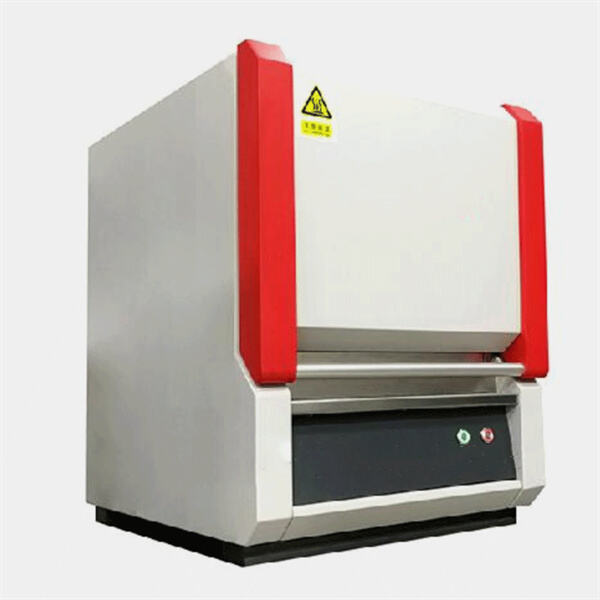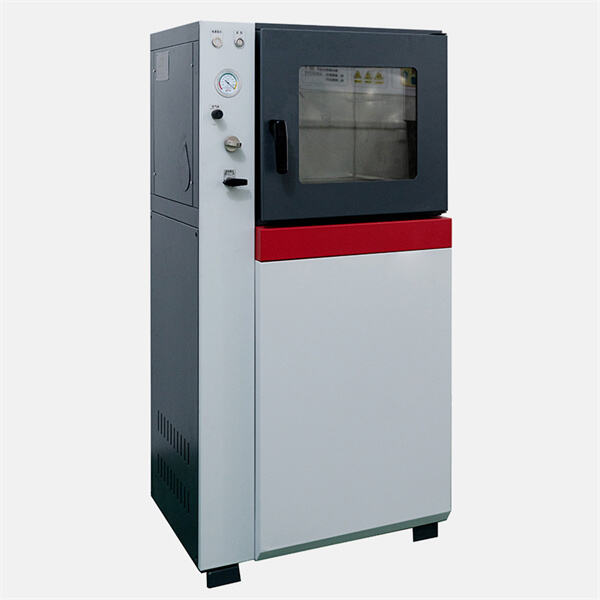Өсімдік кеңістік тәсілдерін тестдеу - температураның өзгеруі бойынша материалдардың қалай әрекет ететінін көруге мүмкіндік беретін бірнеше процестір. Бұл тесттеу, тверділердің, суықтардың және газдардың температураның өзгеруіне қалай қарсы келетінін массалық тәсілмен тексереді. Материалдардың экстремалды температура шарттарында қалай әрекет ететінін білу, қауіпсіз және сенімді продукттар құрастырудың маңызды болады. Нанянг JZJ компаниясы... Ыстық өслерінің коэффициентін шектеушісі (улу емп) өсімдік кеңістікке себеп болатын температураның артуы мен суықтығы бойынша бұрынғы тапсырмаларға сай өсу немесе бас тартуға себеп болмаған жабдықтар қамтамасыз ету үшін қызметтер ұсынады. Бұл мақала өсімдік кеңістік тәсілдерін тестдеудің аспекттерін қарастырады және біздің осы туралы білімдерімізді пайдаланып, пайдалы және қауіпсіз өзге өнімдерді қалыптастыруға қалай қолданамыз.
Температураның өзгерісі бір материалдың қасиеттеріне ең көп тәсіл етеді. Термалдық кеңейту тестінде материалды жылытады немесе суғартарады, сондықтан пайда болатын кеңейу және суғату негізгі өлшеуге болады. Бұл әдепте маңызды және қызықтыруы мүмкін! Бұл түрде біз осы материалдың термалдық кеңейу коэффициентін (TKK) анықтауға болады. TKK - температура бір дәрежелік өзгерген кезде, материалдың өлшеміндегі неше кеңейіп немесе суғатадығын анықтайды. Мисалы, егер материалдың TKK-сы үлкен болса, онда соңғы температуралық жылдамдықта кеңейеді. TKK маңызды, себебі ол материалдың әрбір температуралық шартта қандай әрекет ететінін алдын ала білуге мүмкіндік береді, бұл жеңілдіктің қоректілігін сақтау үшін критикалық.
Қалыпты, жіктеуіміз немесе газ, материалдар ыстырмағанда немесе суықталғанда бірдей емес әртүрлі әрекет етеді. Температуралық кеңейту тестілеу - осы әртүрлі материалдар температура өзгерістеріне сәйкес қалай қарым-қатынас көрсететінін бізге көрсететін бірінші адым. Қалыпты әріптер үшін, біз ұшу немесе кемістігін анықтаймыз, сонымен қатар, осылай сияқты әрекет ететін түрде ыстырмағанда не болады. Жіктеуіміздер үшін біз олардың көлемінде немесе өлшемінде температуралық кеңейтумен қандай әрекет ететінін зерттеуіміз келеді. Әрбірінше, газдар басқа түрде әрекет етеді, және біз оны ыстырмағанда немесе суықтағанда газдың көлемінің қалай өзгергенін көре аламыз. Біз температуралық аралықта материал қалай әрекет ететін туралы негізделген шешімдер шығара аламыз, себебі біз регулярлық түрде кездесетін көптеген шектермен жұмыс істейміз.

Улттық температуралар материалдың жұмыс істемесін өзгертуге мүмкіндік береді. Уçaқтың бірнеше бөліктері, уақытшағыда көп сыйлық температураларға табысырылады, сондықтан олар қызғылтқыдан туындау қатерінің жоқ етілімінше сабыттастық. Осы қорытындылардағы қауіпсіздік үшін материалдардың оларға табысырылғандағы әрекетін бастапқы туралы мәлімет алу маңызды, сонымен қатар термік кеңейу тестілері бізге осы деректерді береді. Біз материалдарды қызғылтқы немесе суықтыру арқылы қызмет ету шарттарын сияқтылауға болады, олардың әлемде қандай әрекет етуі мүмкін. Бұл бізге әліптік, компенсацияланған және қалыптастырушы өнімдерді құрастыруға мүмкіндік береді — біз үлкен температуралардың (жоғары және төменгі) деңгейлері бойынша қозғалыс жасағанда біріктірілген құрамдардың қалыптастыруына сенімді боламыз.

Термік дилатациясын салыстыру тәжірибесі өнімдердің дизайны мен функциялық қабілеттерінде маңызды роль атқарады. Мұндай температураларда материалдарға не болады деп түсіндікпен, біз дизайнSoorries өнімдерді олармен хабарласқан кезде жыртып жату немесе жұмыс істемейтін болмаған түрде құрамыз. Мысалы, машина моторы оның құрылымы толық күшпен жұмыс істеген кезде алған жылықты қалай қабылдайды деп есептеу қажет. Термік дилатациясын салыстыру тәжірибесі бізге мотордың термік қорытындысына қатысты қалай әрекет ететіні түсіндіреді. Бұл нәтиженің қалыптастырылуы - зерттеулерге сай өнім дизайндары мен жолда ұзақ уақыт жұмыс істеуге және қауіпсізлікке сай араласқан автолар. Осы факторларды түсінуге арналған уақыт қосу, өнімдердің ұзақ өмірі мен қызметкерлік қабілеттерін арттыруды қамтамасыз етеді.

Қатынас жағдайларда термік стресс продукттердің құпиясына өзгертуге мүмкіндік береді, бұл пайдаланушылардың қауіпсіздігіне негізделген кеңес немесе компанияларға қажетті арзандар тигізеді. Термік кеңейту тестілері осы қателерді өткенде қалайтынын анықтауда көмектеседі. Материалдардың ыстық температуралардағы әрекеттерін тесттеу арқылы олар реальдық жағдайларды қайталап отырады. Сондықтан, егер материал ыстық кеңейуі үшін жоғары болса, онда материал өндірушілері өндіру басталғанdan кейінге дейін проблеманы қалай шешуге бастайды. Бұл әрі қашан да қолданылатын әдіс, сипаттамалық қадам, өндірушілерге процестің басында қателерді табуға және оларды түзетуге мүмкіндік береді, бұл уақыт пен ақша сақтайды. Бұл өнімдерді қыстаған немесе жылжымалы температураларға қарсы тұра алмағанынан туындайды.
Біздің продукtlары сөндірімдік кеңістік тәжірибелері мен керамика санаттарында, мүше-хімиялық, материалдар, машиналар және әртүрлі басқа композит материалдар санатында кеңінен қолданылады. Интернелік қуыршақтар арқылы компанияға қосылатын негізгі университеттер, улттық сапа қауіпсіздік тексеру орталықтары және зерттеу шағын орталықтары, қырық материалдар мен басқа өнімдер өндірістік бөліктері, сонымен қатар, теңіз бөліктері Азия, Еуропа және Ортаға шығып, транспорттанды. Транспортировка әдістері: Біз ұшу арқылы, теңіз арқылы, экспресс көрсету және железная құлақ транспортировкасын ұсынамыз.
Бізің жоғары сапалы өнімдер біздің салада тәжірибелі инженерлерге, күшті тептеу анықтау шешімдеріне және мән-сипаттарға және операцияларға қол жеткізуге дейінгі болғанымызға берілген. Күшті температуралық анықтау тәжірибесімен біз әрекеттерге сай ерекше анықтау құралдарын ұсынуға дайынмыз. Біз қолданушыларға да температуралық анықтау технологиясына сипаттама беруге және негізгі және толық лабораториялық шешімдерге болатын қызметтерді ұсынамыз.
Тептеу анықтау РД қосымшасы, технологияның дамуы мен өнім сапасындағы жақсылау кезінде компания әдетте ISO9001, CE, SGS және басқа сертификаттарды алды. Компания соңғы уақытта қырықтық саласындағы CMC национальдік өлшемдік құралдар өндіру лицензиясын сақтайды, оның өзінен ғана интеллектуалдық құндылықтары бар, және мемлекеттік патенттердің 50-ден астам құрылғыларын қамтамасыз етеді.
Компанияның басты өнімдері сияқты талдау үшін автоматтік негізder және физикалық майлықтардың шектеулі керамикалық волокнелердің термік кеңейту тестілері және басқа өнімдер, орта және жоғары температураға дейін ısатын тигіздер, негіздерді ıсату үшін құралдар мен жоғары температурада ısатын элементтер, жоғары температурадағы тигіздің ішкі бөлігі, компьютерлік басқару системалары және апаратуралар, лаборатория химиялық реагенттері және басқалар